Unleashing the Core Value of Blockchain Databases: Deconstructing Verification Challenges On-Chain
Written by: Deep Tide TechFlow
As a fan of the Chinese Super League, I recently noticed that a local club launched a season ticket package, allowing those who snagged it to watch all home games of the 2025 season live.
However, I missed out because fans holding 2024 season tickets had priority for purchase. Although the club's intention was to reward long-term supporters, the reality turned out to be quite the opposite:
Many of last year's season tickets were snatched up by scalpers, who never attend the games but resell the ticket privileges at high prices. True fans are left with the choice of buying scalper tickets at several times the market price or having no game to watch.
As a blockchain practitioner, this sparked my thoughts on "How can blockchain truly impact real life?"
How can clubs sell season tickets to genuine fans?
The crux lies in how to accurately and efficiently verify the fan identity of purchasers.
What if we could write data such as attendance records of past games and purchase records of club-related products onto the blockchain, leveraging blockchain's powerful verification capabilities as a distributed data system? Wouldn't it make it easy to verify fan identities when purchasing tickets?
Looking closely, verification scenarios are ubiquitous in life, but most suffer from inefficiencies, high costs, and lack of rigor. If we could put large-scale real-world data on-chain, enabling efficient, simple, and low-cost verification of data anytime and anywhere, would this not be an effective path to harnessing the value of blockchain technology and promoting its widespread adoption?
With this thought in mind, I began to explore the "on-chain verification" sector, and to my surprise, people had already recognized this entry point as early as 2020, continuously building a complete product, a rich ecosystem, and an active community over the years.
This project is the Sign Protocol, a full-chain verification protocol.
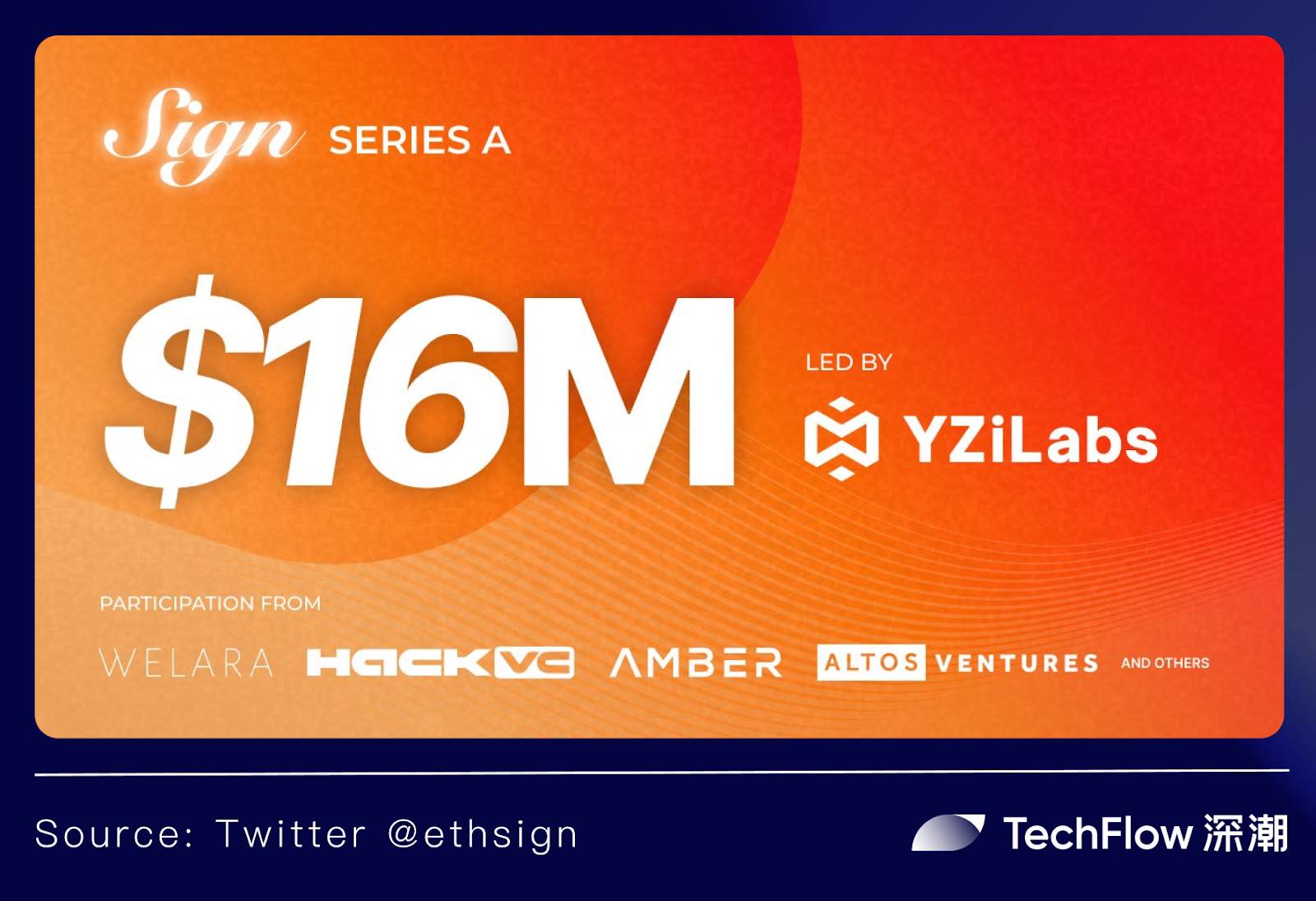
Unleashing the Core Value of Blockchain Databases: Deconstructing Verification Challenges On-Chain
Verification is everywhere in life.
When you check into a hotel, you need to provide the appropriate identification to verify your reservation;
When you start a new job, you need to provide educational credentials, professional skill certificates, and other materials to verify your abilities and commitments;
When you want to take out a loan to buy a house, you need to provide household registration/social security payment information, bank statements, proof of stable income, etc., to verify your eligibility to purchase a home…
But if you pay attention, you'll find that traditional verification systems have many issues:
Everyday verification lacks rigor, just like season tickets that were not genuinely purchased by real fans;
And important verifications often become inefficient and expensive under the guidance of authoritative institutions.
Take applying for a U.S. visa as an example; typically, you need to prepare a lot of materials:
Identity materials: household registration, ID card, etc.
Financial status materials: bank statements; income proof; property proof, etc.
Employment status: proof of employment issued by the company
Travel arrangements: round-trip tickets; hotel reservations, etc.
……
You need to run back and forth between banks, social security bureaus, and consulates to collect this long list of materials, which not only incurs high costs but often involves long waiting times.
Even worse, when you want to apply for visas to other countries, you have to repeat this cumbersome process countless times because the visa systems of different sovereign countries do not interconnect.
Anyone who has gone through this knows how troublesome it is.
We truly need a rigorous, efficient, convenient, and low-cost verification solution.
And blockchain technology, with its decentralized, tamper-proof, and transparent characteristics, shows outstanding advantages in deconstructing verification challenges.
We know that due to the division of different sovereign countries and power institutions in the real world, and the information isolation between them, this leads to inefficiencies and high costs in verification.
Blockchain does not have these divisions; it is essentially a distributed ledger where all nodes maintain complete transaction records, which gives blockchain a very important technical characteristic:
Every transaction can be verified at any time and from any location.
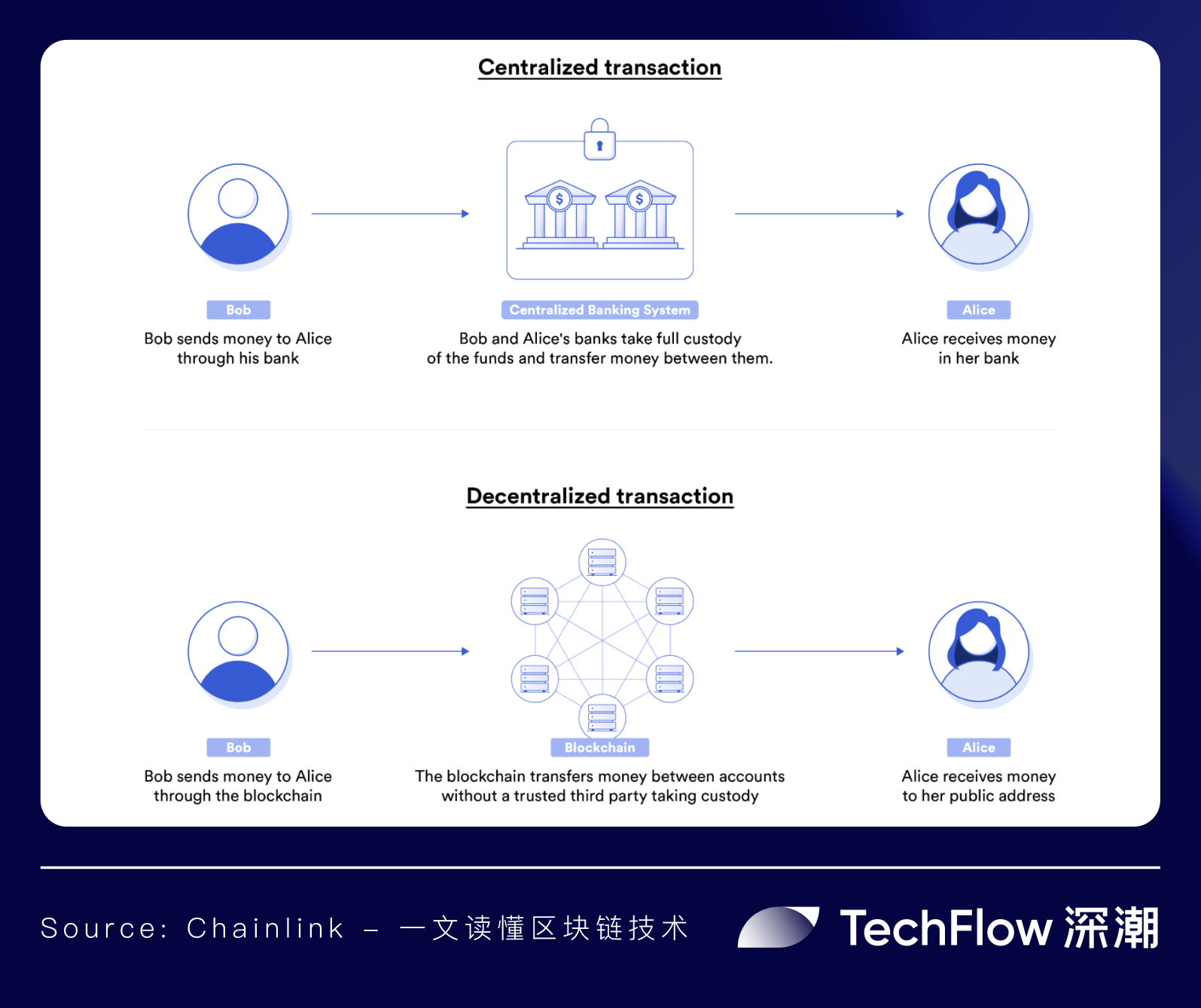
So, based on this technical feature, can we write data into the blockchain using standardized data formats, enabling verification of data at any time and from any location?
At the same time, the data written can come from a vast amount of real-world data, allowing everything to be on-chain and verifiable in a simple, efficient, and low-cost manner?
Furthermore, due to the public and transparent nature of blockchain, can we introduce technologies like ZK to achieve data privacy protection?
This is what Sign Protocol aims to accomplish.
From Data Standardization to Efficient Retrieval: How Sign Makes Everything Verifiable On-Chain
What Sign Protocol wants to do is actually quite simple:
Leverage the core value of blockchain as a distributed database, enabling users to freely prove and retrieve structured and verifiable data on-chain, providing on-chain solutions for any user/scenario that requires verification.
The realization of all this relies on the following key steps:
Writing data
Creating proofs
Storing proofs
Efficiently retrieving proofs
The solution of Sign Protocol revolves around these key steps.
In the product design of Sign Protocol, there are two very important concepts:
One is Schema, which acts like a data standard, defining the types and structures of data presented when creating proofs.
The other is Attestation, which is a proof that conforms to the Schema's digital signature structured data. Due to the public and transparent nature of blockchain, in many specific application scenarios, we need to achieve on-chain visibility of data without disclosure; therefore, Sign Protocol also introduces ZK technology as an optional privacy feature, providing solutions for data and scenarios that require privacy protection, further broadening the applicability of on-chain verification.
There is a mutual dependency between Schema and Attestation:
To create a Schema, you first need to confirm the Attestation you are trying to create, i.e., what types of information do you plan to store in the Attestation? How much data is there?
To create an Attestation, you first need to find or create a compatible Schema because the Attestation must adhere to the format defined by its Schema, ensuring that the Attestation is accurate, parsable, and composable for any verifier.
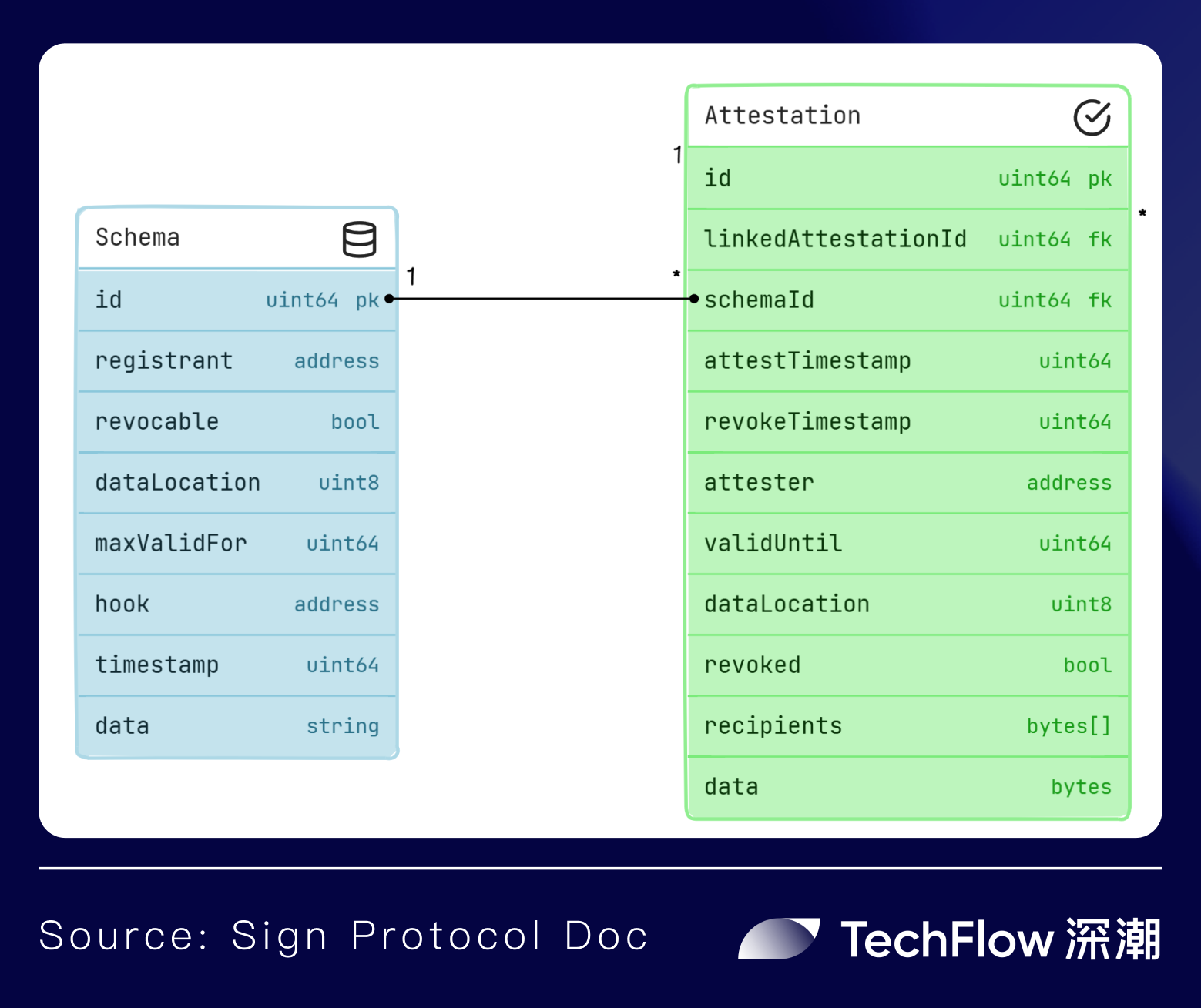
Once the Attestation is created, it will be stored via smart contracts. Sign Protocol supports both on-chain and off-chain storage methods to better support the storage of large amounts of data. Generally, larger datasets are cheaper to store off-chain, and Sign Protocol supports Arweave/IPFS storage.
When it comes time to query proofs, Sign Protocol provides efficient indexing services, allowing users to access via REST endpoints and GraphQL endpoints, or directly through the NPM SDK. On-chain data is verified through the consensus mechanism of the blockchain, while off-chain data is verified by comparing hash values with the hash values stored on-chain.
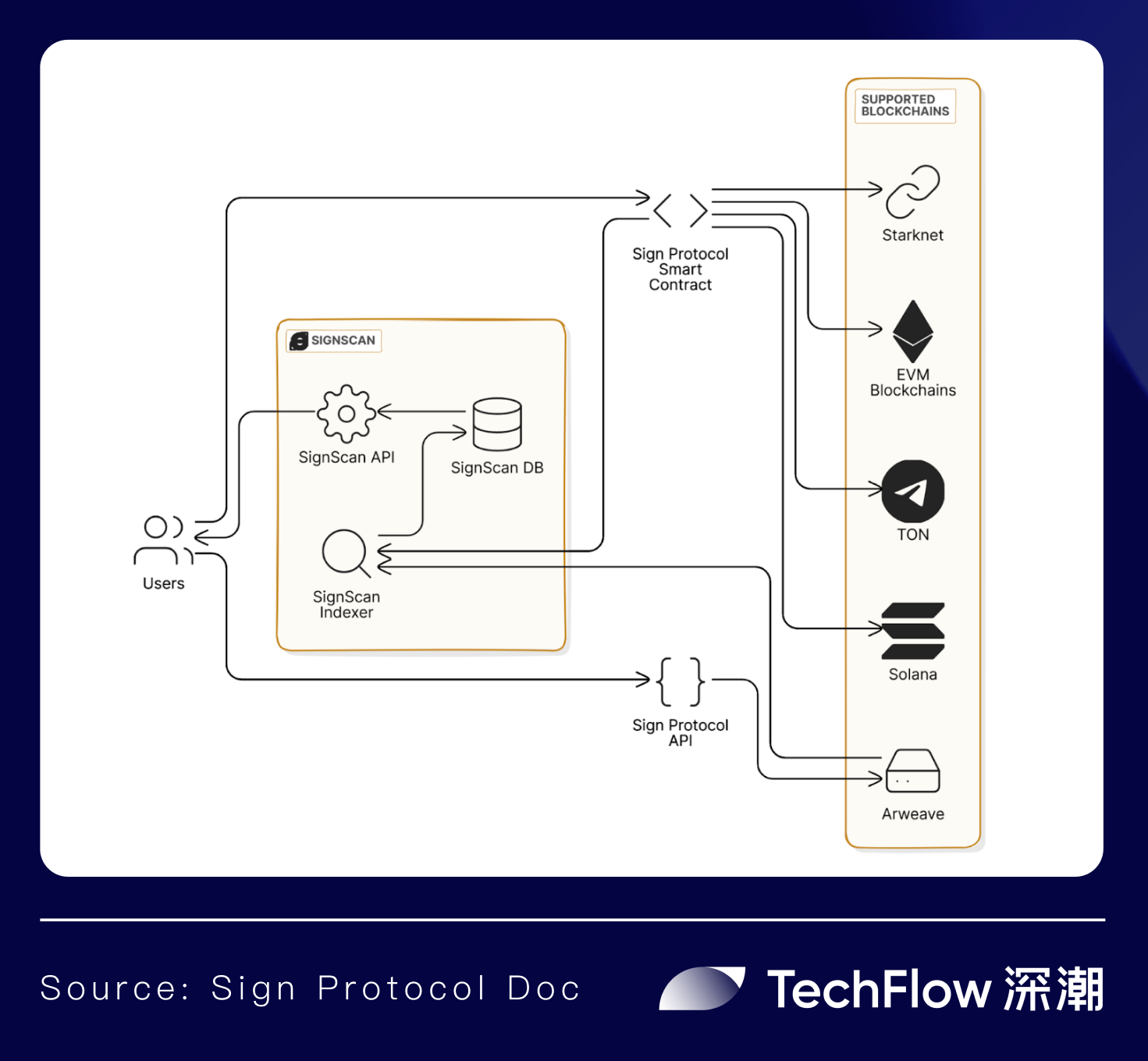
Meanwhile, facing complex and diverse verification scenarios, Sign Protocol also possesses strong composability:
Developers can create custom functional smart contracts through Schema Hooks, allowing them to execute custom logic when Attestations are created or revoked, further enhancing the protocol's flexibility and functionality. This is akin to combining different types of Schemas to meet the needs of various complex scenarios, such as efficiently verifying home purchase eligibility by combining different Schemas like bank statements, social security payment proofs, and household registration proofs.
Additionally, as a full-chain protocol, Sign Protocol aims to operate independently of any specific blockchain, easily transplantable to any blockchain environment to provide services across the entire chain. It currently supports Ethereum and EVM blockchains, with plans to support more blockchains in the future, aiming to further become a verification solution that serves the entire chain and all scenarios.

Connecting On-Chain and Off-Chain Verification: A Leap in the Development of a Blockchain Super Sovereign Society
In this cycle dominated by PvP battles, we are immersed in the sensory stimulation brought by fast-paced interactions, but many also have doubts:
What can blockchain really do? Is it just about creating a massive on-chain casino?
Returning to the previous point: blockchain is essentially a distributed database:
Previously, this database had little intersection with real-world scenarios, so it was merely a database for carrying on-chain trading activities;
However, when this database begins to incorporate more data from real-world life scenarios, blockchain transforms into a digital super sovereign society that operates parallel to the real world.
Sign Protocol, based on a true understanding of the characteristics of blockchain technology, effectively attracts large-scale data onto the chain through valid verification, genuinely creating user demand for blockchain technology, while also building an excellent demonstration of "leveraging the advantages of blockchain technology to bring real change to the real world," and introducing more real-world scenario support for the development of blockchain as a "super sovereign society."
Let’s take international travel as an example again; imagine this:
No matter which country's visa you are applying for, you can prepare all the materials in just two minutes because your employment proof, income proof, bank statements, family relationship data, etc., are all on-chain and can be efficiently called for verification. You only need to retrieve the relevant material data proofs from the chain as required and combine them. With ZK technology, you also need not worry about privacy data leakage.
No matter which country you go to, you can use a compliant and globally accepted ID card to securely, efficiently, and conveniently prove "you are you" at any time, in any place, and in any scenario: for instance, during layovers, immigration, hotel check-ins, etc., staff can simply scan the QR code on the card to instantly verify the authenticity of the ID on-chain, while quickly completing identity verification by comparing the photo and other biometric information on the ID with your own.
At the same time, you can also use this ID in many online scenarios. For example, when undergoing KYC at an exchange, you no longer need to repeat facial recognition, take photos, upload them, and wait for approval; everything will be digitally verified on-chain within minutes.
This verification is not only rigorous and efficient but also significantly reduces costs, representing a complete revolution and upgrade of the traditional verification experience.
Verification is ubiquitous in life, and based on the Sign Protocol on-chain verification solution, Sign Protocol will bring significant changes to all scenarios that require verification:
In today's increasingly interconnected global economy, you can sign agreements at any time and in any scenario through Sign Protocol, and anyone, anywhere, at any time can verify your signature;
When you need to purchase health insurance, your health status can be efficiently verified on-chain through Sign Protocol, easily addressing health assessments from different insurance providers;
When you want to participate in an art auction that requires capital verification but lack sufficient cash flow, your on-chain assets can help you complete the verification through Sign Protocol;
When you participate in voting decisions, you can verify whether the ballots come from genuine voters, ensuring that the results reflect the demands of the majority of stakeholders;
Moreover, based on the logic of "everything can be verified on-chain," more real-world application scenarios will be covered by the Sign verification system:
By verifying a certain social behavior, such as being an AI enthusiast, forming social circles based on "birds of a feather flock together";
By verifying the interactive contributions of community members, quickly building a "labor for reward" community management;
By verifying consumers' shopping records, efficiently establishing brand membership systems, and so on.
There are countless examples. Wherever there is verification, there is Sign Protocol.
In fact, Sign Protocol has already achieved remarkable results in multiple scenarios:
The decentralized electronic protocol signing platform EthSign built on Sign Protocol has served over 300,000 users;
The on-chain token distribution protocol TokenTable built on Sign Protocol has collaborated with over 200 projects, supporting more than $4 billion in token airdrops and unlocks, covering 40 million users and investors, with revenues exceeding $15 million in 2024;
The identity verification system SignPass built on Sign Protocol has partnered with the government of Sierra Leone to launch an ID card: SignPass can provide users with on-chain verifiable IDs, and all SignPass credentials will be registered on the blockchain in an encrypted manner through Sign Protocol. At the same time, holders will also receive a physical ID card that complies with the International Civil Aviation Organization's machine-readable passport standards and can link to a unique QR code recorded on the blockchain. By scanning the QR code on the ID card, holders can travel efficiently worldwide.
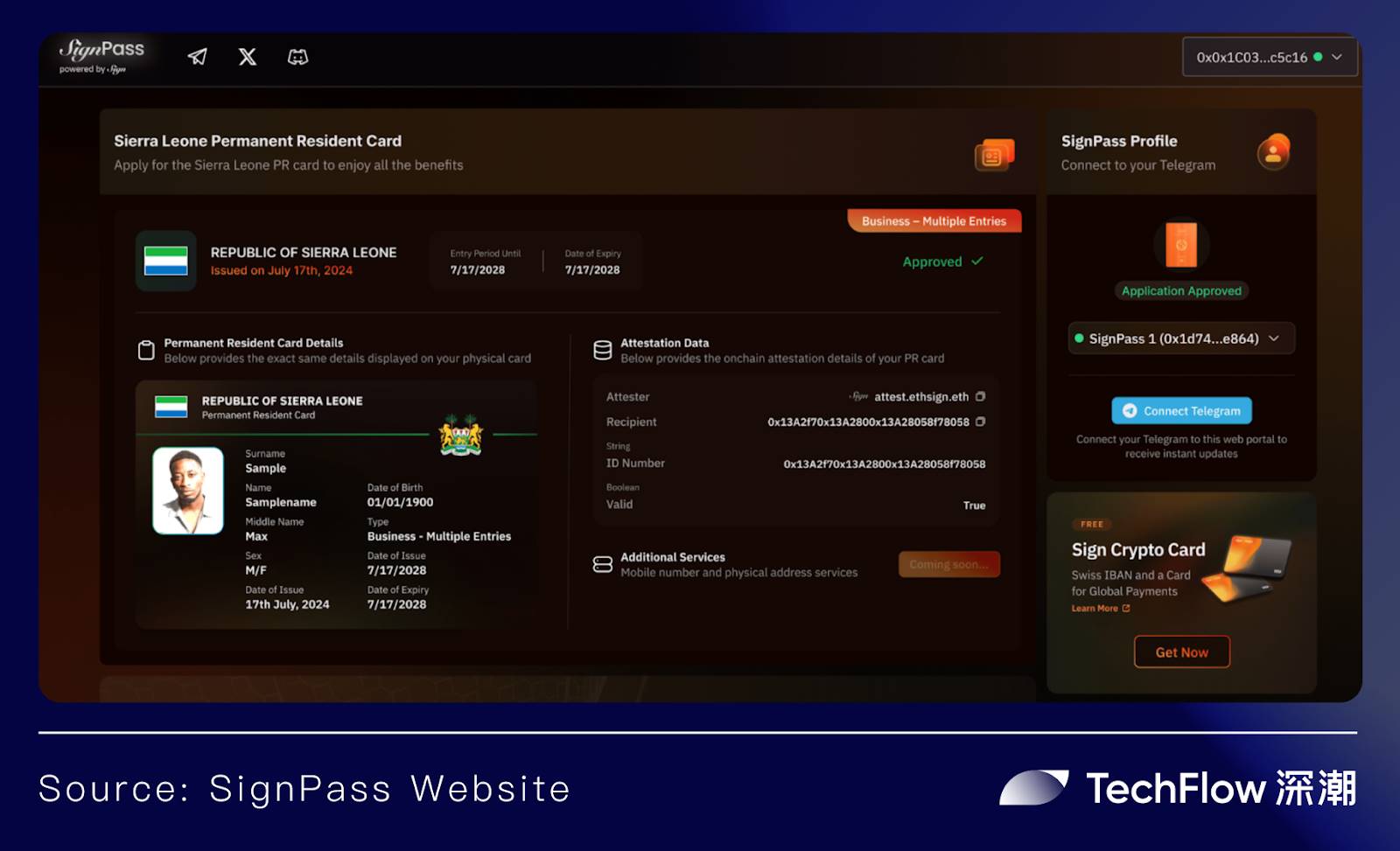
After Sierra Leone, Sign Protocol has also announced a partnership with the UAE government regarding the Web3 Entrepreneur Program. According to the roadmap disclosed by its officials, in 2025, Sign Protocol will continue to focus on promoting deep cooperation between SignPass and major sovereign governments, regulatory agencies, and industry alliances.
The year 2025 will be a significant year for the deep integration of blockchain and the real world: the implementation of the U.S. government's crypto-friendly policies, the active crypto actions of the president, and the continuous entry of traditional institutions all signal that blockchain regulation will become clearer and the exploration of blockchain business areas will be more open.
As more real-world scenarios are covered by Sign Protocol's verification services, and more citizens obtain blockchain identities through SignPass, with a large volume of national-level users being migrated on-chain, what innovations will emerge in the super sovereign society built on the blockchain by Sign Protocol?
In the current context of a gradual return to long-term valueism, stay tuned and keep your expectations high.
免责声明:本文章仅代表作者个人观点,不代表本平台的立场和观点。本文章仅供信息分享,不构成对任何人的任何投资建议。用户与作者之间的任何争议,与本平台无关。如网页中刊载的文章或图片涉及侵权,请提供相关的权利证明和身份证明发送邮件到support@aicoin.com,本平台相关工作人员将会进行核查。




